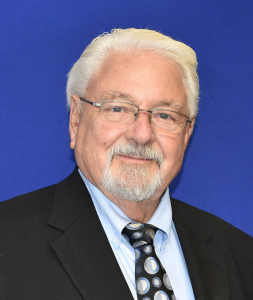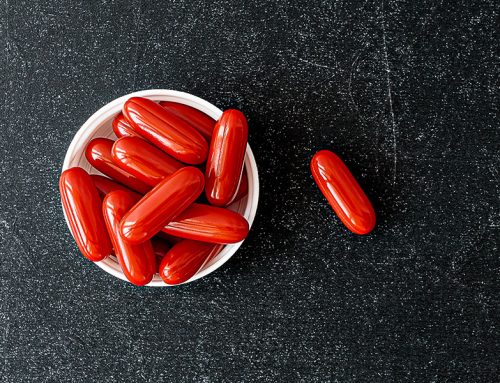Heart failure – it sounds scary. It is scary, but the medical term heart failure does not mean that your heart stops beating. No, instead, it means that your heart can’t pump enough blood and oxygen to your body. The thing to remember is that the heart tissue is muscle tissue. As such, it needs a constant supply of ATP energy, and Coenzyme Q10 (CoQ10) is essential to the process of ATP energy generation [Crane 2001]. Furthermore, the heart muscle tissue needs protection against the oxidative damage caused by harmful free radicals, and CoQ10 in its reduced form is an important antioxidant [Crane 2001].

In the 30-year study of the management of congestive heart failure patients, Dr. Judy found that CoQ10 therapy in addition to conventional medication is more effective than conventional medication alone; however, the patients’ response to the CoQ10 adjunctive treatment is fairly slow, with peak improvements coming within 8 – 12 months. The conventional medication plus CoQ10 therapy is safe; it improves long-term survival compared to conventional medication alone.
Heart failure may develop because the heart muscle has weakened or has become thicker and stiffer. Your heart muscle can compensate for a period, but, eventually, you will need treatment.
Symptoms of Heart Failure
- Shortness of breath
- Fatigue and weakness
- Swelling in the lower extremities
- Reduced ability to exercise
- Build-up of fluid in the lungs
- Persistent coughing or wheezing
- Swelling in the abdomen
Left Ventricular Ejection Fraction
Ejection fraction is the percentage of the blood in the heart’s left ventricle that gets pumped out into the body when the heart muscle contracts. Pfeffer et al [2019] estimate that approximately half of the patients with the symptoms of heart failure have a left ventricular ejection fraction that is not markedly abnormal. Their condition is called heart failure with preserved ejection fraction in contrast to heart failure with reduced ejection fraction.
- Normal ejection fraction is between 50% and 70%.
- Preserved ejection fraction is above 50%.
- Reduced ejection fraction is below 40%.
- Borderline ejection fraction is between 40% and 49% (HFmEF).
Heart failure – the failure to pump adequate quantities of blood out to the body – can occur in patients whose left ventricle is too weak to pump sufficient blood out (reduced ejection fraction) or in patients whose left ventricle contains less blood to pump out because the left ventricle has become too thick and too stiff (preserved ejection fraction). In the latter case, the left ventricle pumps out a normal percentage of the blood in the left ventricle but a lesser volume of blood nevertheless.
Types of Heart Failure
The Left Side of the Heart
- The heart pumps oxygen-rich blood from the lungs to the left atrium and then to the left ventricle.
- The left ventricle pumps the blood to the rest of the body.
- In cases of left ventricular heart failure, the heart must work harder to pump the same amount of blood.
Heart Failure with Reduced Ejection Fraction (Systolic Failure)
The left ventricle is no longer strong enough to force enough blood into circulation.
Heart Failure with Preserved Ejection Fraction (Diastolic Failure)
The left ventricle is no longer able to relax normally between contractions because the heart muscle has become stiff. Consequently, the heart cannot fill up with sufficient blood between each heart beat.
The Right Side of the Heart
The blood in the circulation delivers its oxygen and nutrients to the rest of the body. The blood returns to the right atrium and moves into the right ventricle. The right ventricle pumps the blood out of the heart into the lungs to be loaded up with oxygen.
Right ventricular heart failure usually results from left-sided failure. The left ventricle fails to pump enough blood, backing everything up so that there is increased fluid pressure on the lungs and on the right side of the heart.
What happens then is that the blood begins to back up in the veins, causing swelling in the lower extremities and in the abdomen. The condition in which there is a build-up of fluid (edema) in the lungs and abdomen and lower extremities is often referred to as congestive heart failure.
CoQ10 Adjuvant Therapy for Heart Failure with Reduced Ejection Fraction (HFrEF)
Claxton and a team of British researchers have reviewed the data from 26 clinical trials, enrolling 2250 participants. They have concluded that CoQ10, as an adjuvant therapy to conventional heart failure treatment, has the potential to be clinically effective and cost-effective for patients with heart failure with a reduced ejection fraction. The analysis revealed the following benefits of CoQ10 adjuvant therapy for heart failure with reduced ejection fraction [Claxton 2021]:
- Reduced all-cause mortality
- No increased incidence of adverse events
- No evidence of a CoQ10 treatment interaction with statin medications
- High probability (higher than 95%) of being more cost-effective than standard heart failure care alone
- Cost-effective adjuvant treatment
The Q-Symbio Trial of the Effect of CoQ10 on Morbidity and Mortality in Chronic Heart Failure
The Q-Symbio two-year randomized controlled trial enrolled patients with chronic heart failure, predominantly with reduced ejection fraction. The patients were administered 3 x 100 mg of Coenzyme Q10 daily in the ubiquinone form in separate doses or matching placebos [Mortensen 2014].
The study data show that long-term CoQ10 treatment of patients with chronic heart failure improves survival and symptoms and reduces the incidence of major adverse cardiovascular events. The CoQ10 adjuvant therapy is safe, well-tolerated, and affordable [Mortensen 2014].
Meta-Analyses of CoQ10 Therapy and Ejection Fraction
Three meta-analyses, conducted before the results of the Q-Symbio Study were published, of the effect of adjuvant CoQ10 therapy on heart failure have shown a statistically significant increase in ejection fraction [Fotino 2013, Sander 2006, Soja and Mortensen 1997].
A 2019 analysis of the effect of Coenzyme Q10 in the European sub-population of the Q-Symbio clinical trial has shown the following significant outcomes in the CoQ10 adjuvant therapy group [Mortensen 2019]:
- Fewer incidences of major adverse cardiovascular events
- Reductions in all-cause and cardiovascular mortality
- Reductions in NYHA classification
- Reductions in left ventricular ejection fraction
CoQ10 Adjuvant Therapy for Heart Failure with Preserved Ejection Fraction (HFpEF)
Remember: Heart failure with preserved ejection fraction is a class of heart failure distinct from heart failure with reduced ejection fraction. Therapy for the two types of left-sided heart failure is different. However, patients with both forms of heart failure seem to benefit from adjuvant treatment with CoQ10.
Sobirin Study
Sobirin et al investigated whether CoQ10 could improve left ventricular diastolic function in patients with HFpEF. The researchers administered either Coenzyme Q10 100 mg three times a day or no CoQ10 in addition to the patients’ conventional treatment for 30 days. They evaluated left ventricular diastolic function using two dimensional and Doppler echocardiography. They found improved diastolic function in the CoQ10 treatment group, compared to the placebo group, but the difference did not reach the level of statistical significance [Sobirin 2019].
This outcome may be due to the relatively short period of CoQ10 supplementation – only 30 days. Supplementation for at least 12 weeks may be necessary to reach a potent steady-state concentration.
Adarsh Study
In 2008, Adarsh et al evaluated patients with diastolic heart failure and without history of prolonged hypertension. Their data showed that co-administration of Coenzyme Q10 may improve diastolic function and may decrease the severity of mitral regurgitation (= a backward flow of blood from the left ventricle into the left atrium because the mitral valve does not close properly) [Adarsh 2008].
Langsjoen Study
Langsjoen et al enrolled heart failure patients receiving long-term statin therapy, 94% with HFpEF and 6% with HFrEF. Dr. Langsjoen applied a treatment that consisted of simultaneous discontinuation of the statin therapy and commencement of a CoQ10 supplementation therapy (average dosage = 300 mg/day) [Langsjoen 2019].
After a follow-up of 2.8 years, 34% of the HFpEF patients had a normalization of diastolic function and 25% showed statistically significant improvement in diastolic function [Langsjoen 2019].
In the patients with reduced ejection fraction at baseline, the ejection fraction improved significantly from a mean of 35% to 47%. The patients’ symptoms that were attributed to the statin medication – fatigue, muscle weakness, pain or tenderness, memory loss, and peripheral neuropathy –improved significantly [Langsjoen 2019].
Based on the study results, Langsjoen et al postulated as follows [Langsjoen 2019]:
- Heart muscle disorders may develop in patients receiving long-term statin therapy.
- Statin-associated heart muscle disorders may respond safely to a discontinuation of the statin treatment and a commencement of CoQ10 supplementation.
- Statin-associated heart muscle disorders may be a contributing factor to the current increasing prevalence of HFpEF.
Conclusion: CoQ10 Therapy for Heart Failure
Heart failure comes in various manifestations. Some heart failure is caused primarily by reduced ejection fraction; some heart failure is characterized by seemingly normal ejection fraction.
In both cases, the application of CoQ10 adjuvant therapy has been shown to be safe, well-tolerated, effective, and cost-beneficial.
Final thought: Not all commercially available CoQ10 supplements are formulated in the same way. Not all CoQ10 supplements give the same absorption and bioavailability. To avoid wasting money, find a CoQ10 supplement with documented absorption and documented clinical effectiveness.
Sources
Crane FL. Biochemical functions of coenzyme Q10. J Am Coll Nutr. 2001 Dec;20(6):591-8.
Fotino AD, Thompson-Paul AM, Bazzano LA. Effect of coenzyme Q₁₀ supplementation on heart failure: a meta-analysis. Am J Clin Nutr. 2013 Feb;97(2):268-75.
Mortensen SA, Rosenfeldt F, Kumar A, Dolliner P, Filipiak KJ, Pella D, Alehagen U, Steurer G, Littarru GP; Q-SYMBIO Study Investigators. The effect of coenzyme Q10 on morbidity and mortality in chronic heart failure: results from Q-SYMBIO: a randomized double-blind trial. JACC Heart Fail. 2014 Dec;2(6):641-9.
Mortensen AL, Rosenfeldt F, Filipiak KJ. Effect of coenzyme Q10 in Europeans with chronic heart failure: A sub-group analysis of the Q-SYMBIO randomized double-blind trial. Cardiol J. 2019;26(2):147-156.
Sander S, Coleman CI, Patel AA, Kluger J, White CM. The impact of coenzyme Q10 on systolic function in patients with chronic heart failure. J Card Fail. 2006 Aug;12(6):464-72.
Soja AM, Mortensen SA. Treatment of congestive heart failure with coenzyme Q10 illuminated by meta-analyses of clinical trials. Mol Aspects Med. 1997;18 Suppl:S159-68.
The information presented in this review article is not intended as medical advice and should not be used as such.
15 May 2022









Thank you! Very relevant information. I’m 70 years old and I sometimes experience the symptoms you describe. I have read a lot about coenzyme Q10 and I think I want to try it. What product is a good one? Thanks
Dear Mr. Goldstein,
Thank you for your comment. The CoQ10 supplement market in the US is a buyer beware marketplace. There are many misleading claims for products.
Viz. https://pubmed.ncbi.nlm.nih.gov/35250400/
The evidence shows that the formulation is more important than the form of the CoQ10 supplement.
Viz. https://pubmed.ncbi.nlm.nih.gov/30153575/
And https://pubmed.ncbi.nlm.nih.gov/32380795/
You want a supplement with documented efficacy. What about the product that was used in the Q-Symbio Study, the KiSel-10 Study, and the Gulf War Illness Study? The same CoQ10 product was used in all three studies.
Viz. http://www.q-symbio.com/can-i-get-the-same-q10-used-in-the-study
Thank you,
Richard